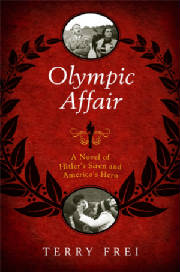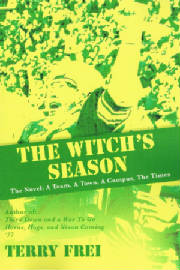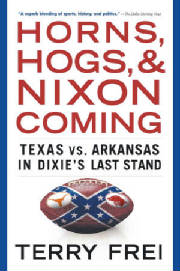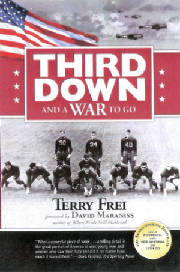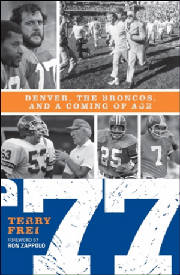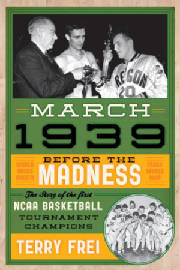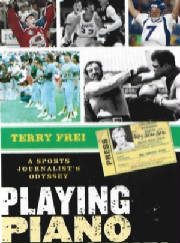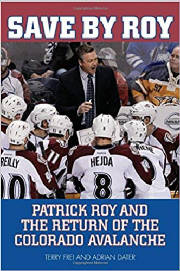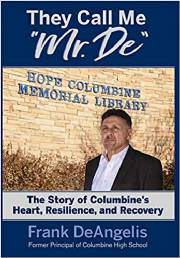January 8, 2021
After
his Thursday death, memories of Tommy Lasorda are flooding in from the baseball world.
I'm not going to try to compete
with the anecdotes about his long and colorful tenure as the Dodgers' manager, or detail his life and career as if I'm on
the Obit Desk.
This goes back
to having crossed paths with him at a couple of junctures.
In the Summer of '70, I was a kid working for the Pacific Coast League Eugene
Emeralds. Lasorda was the Spokane Indians'
fiery manager.
Thirty years
later as a journalist, I was his sole fellow passenger on a corporate jet flight from San Francisco to Denver and spent the
two hours chatting with -- "interviewing" isn't the right word -- Lasorda for what turned out to be two Denver Post columns in June 2000.
If you want to get ahead of the story, here are those columns.
(Note how primitive newspaper web sites could
look in the early years after Al Gore invented
the Internet.)
Part One
Part Two
Now back
to the Summer of '70.
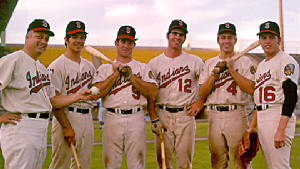
Fairly early in that
season, Bill Buckner stood at the top of the small cement stairway that led to the runway between the visiting clubhouse and
the field at Eugene's Civic Stadium. I was about 20 feet away, at my stall.
"Hey, Billy," one of his Spokane Indians
teammates called out, "wanna go get a nice steak after the game?"
His teammates laughed.
I never
knew who had said it behind me, but I heard it and I saw him grimace. As in, "Very funny, guys ..." (Or maybe something
more graphic.)
Buckner had a broken jaw and it was wired shut.
Ah, I thought at the
time, pro baseball camaraderie.
It is a tiny snippet of what I saw in that summer
of 1970, and it was a tiny part of why I still consider that Lasorda-managed Indians team -- the Dodgers' Class AAA affiliate
-- as one of the most memorable teams I've ever been around, however peripherally. That covers a lot of territory in both
a life and a profession linked to sports.
I also believe the Indians, the 1970 PCL champions, were the best minor-league
team since the 1961-62 expansion from eight to 10 teams in each league. The Indians were 94-52 and swept Hawaii in the championship
series, outscoring the Islanders 38-9 in the four games.
I bet you've already taken a stab at identifying the men in that picture
above.
And the answers are ...
Lasorda, Bobby Valentine, Steve Garvey, Buckner, Tommy Hutton and pitcher Bob O'Brien.
That's remarkable
on its own, but also now consider the other members of that team not included in that group picture:
Tom Paciorek, Davey Lopes, Bill
Russell, catcher Steve Sogge -- the quarterback of USC's 1968 national champions in the backfield with O.J. Simpson -- plus
pitchers Charlie Hough and Doyle Alexander.
Russell played 55 games for the 1970 Indians, but wasn't around for the official team
picture because he had been called up -- for a short-term military stint. Hutton's season was limited to 90 games by injury,
and he and Garvey, who played 95 games, weren't in the team picture, either. The next season, about half those guys were gone,
but Ron Cey also joined the Indians.
I saw the Indians up close,
both in the cramped quarters charitably called the visiting clubhouse and on the field at the converted football stadium across
the street from South Eugene High School.
It was the home of the Phillies' PCL affiliate.
The Emeralds had some eventually well-known
players themselves that season, including future managers John Vukovich and Carl "Stump" Merrill; plus Willie Montanez,
AAA standouts Frank DeCastris and Joe Lis, plus player-coach Ruben Amaro Sr.
That year, I had a tiny stall
in the corner of that visitors' clubhouse.
When I could wedge it in among my school and summer ball seasons
as a 15-year-old, and also the next year, when I moved to a corner of the home clubhouse, I suited up and was everything from
a batboy, an assistant groundskeeper who chalked the batter's boxes before many games, batting practice pitcher and catcher
both on the side and in the bullpen before games. I was invited to sit in on the Emeralds team picture. Literally sit in it,
in fact. That's me in the team picture below, wearing a different uniform and sitting alone cross-legged in front.
I caught "on
the side" to help out Emeralds or Phillies staff working with pitchers. Plus, if you were a former successful major-league
pitcher fallen on hard times and wanted to try a greasy new pitch, I was the guy you'd line up to catch you. Then you'd hear
me break the news that while the ball moved, it might not work because I couldn't grip the ball well enough to get it back
to you. Visiting teams occasionally asked me to catch for them, too.
I even made road trips at the end of each season,
the first because manager Lou Kahn was livid that the Phillies left him with only one catcher and insisted on taking me to
Spokane and Portland to help out. I'll never forget the thrill of being handed the envelope with the $6.50 per diem for the
trip; Lis -- a popular AAA superstar who played 356 games at the major-league level -- telling me to be careful and avoid
asking anyone to "pass the ^%$# butter" when I got home; and Lasorda calling me "Bonus Baby" when both
the Indians and Emeralds were on the same Portland to Spokane flight after we bused up from Eugene. I roomed with the DeCastris,
a great guy who hit .288 with 19 home runs that season and deserved a major-league chance he never got. (In this 2013 Rockford Register Star story by Matt Trowbridge, DeCastris is pictured with an Emeralds helmet
among his collection.)
The other small-world connection came up that season when young Indians trainer Herb Vike asked me if I knew Oregon's
football coach, Jerry Frei. He said he was asking because they were both from tiny Stoughton, Wisconsin. I don't remember
if it was pure coincidence or if he'd asked someone in the Emeralds organization about Jerry Frei, had been told that kid
dressing in the Indians' clubhouse was the football coach's son, and he was making sure. But soon, my father came to a game
and, I believe, had a nice chat with Herb and Lasorda. And I was handed a Louisville Slugger with my name etched on it on
one of the Indians' subsequent trips to Eugene.
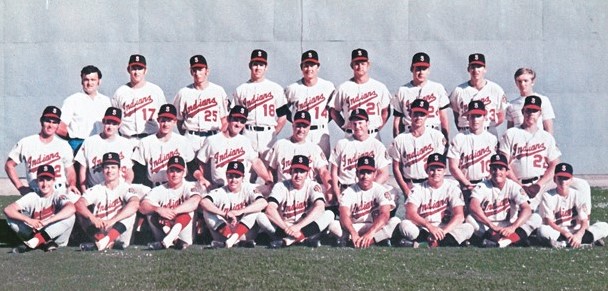
1970 Spokane Indians
Back row: Trainer Herb Vike, Jerry Stephenson, Doyle Alexander, Mike
Strahler, Tom Paciorek, George Lott, Dick Armstrong, Charllie Hough, clubhouse boy Kent Schultz.
Middle row: Bill Buckner, Geoff Zahn, Sandy Vance, Dick
McLaughlin, Tom Lasorda, Bart Shirley, HJohn Purdin, Marv Galliher, Jack Jenkins.
Front row: Batboy Dave Vaughn, Bob Valentine, Bob Stinson, Bob O'Brien, Tom
Mulcahy, Davey Lopes, Steve Sogge, Gus Sposito, ballboy Mike Wilson.
Not pictured: Steve Garvey, Tom Hutton, Bill Russell.
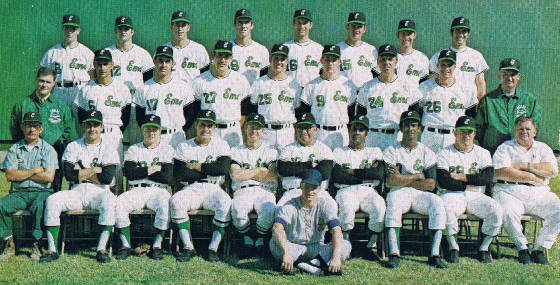
1970 Eugene Emeralds
Back row: Batboy/ballboy Jon Widney, Ken
Reynolds, John Vukovich, Hank McGraw (Tug's brother), Jack Nutter, Billy Laxton, Ed Sukla. Frank DeCastris.
Middle row: Business manager Craig Hayes, Jim Vopicka,
Bill Wolfe, Al Raffo, Jerry Lanning, Billy Champion, Fred Wenz, Jerry Messerly, GM Hugh Luby.
Front row: Groundskeeper Don Conradi, Barry Cox, Gordy Knutson,
Joe Lis, Stirling Coward, Manager Lou Kahn, Ruben Amaro, Willie Montanez, Carl "Stump" Merrill, trainer Ted Zipeto.
... and me.
Here are the Indians' 1970 stats. Valentine (.340, 14 home runs, 80 RBI) and Paciorek (.326, 17 HR, 101 RBI) were the stars, with Valentine winning the
PCL's Most Valuable Player award. Pitcher Jerry Stephenson was 18-5.
Thirty years later, in 2000, Lasorda -- by then a Dodgers vice president after concluding his long managerial stint
-- came to Denver to speak at a fundraiser for the University of Colorado Hospital's Anschutz Center for Advanced Medicine.
That was when The Denver Post's
parent company sent its plane to the San Francisco area to pick him up and bring him to Colorado. (I assume he had been in
the Bay area for another speaking engagement.)
We arranged for me to be on the plane from Denver and to interview Lasorda on the flight back. Just him and me and
the pilots.
He didn't
remember me as the kid in Eugene, but I didn't expect him to and the 1970-era Indians were among the many things we informally
talked about in the interview setting. He was both ebullient and characteristically caustic. We also talked about his one-season
stint as a pitcher with the Denver Bears. Lasorda was about to manage the U.S. Olympic team in Sydney,
and he also spoke bluntly about patriotism.
Lasorda and his Spokane and Albuquerque players
effectively were called up to the Dodgers together, or close to it. The Indians moved to Albuquerque for the 1972 season and
Lasorda joined the Dodgers as a coach in 1973. He succeeded the venerable Walter Alston as manager in 1977.
I got those two columns out of the plane-ride interview.
At one point, I kicked around the idea of trying to do a book on the
1970 Spokane team, tracking down the players both well-known or relatively obscure, and writing about it as coming-of-age
experience for both those who had long major-league careers and those who never got any higher than Class AAA.
I should have done it.



